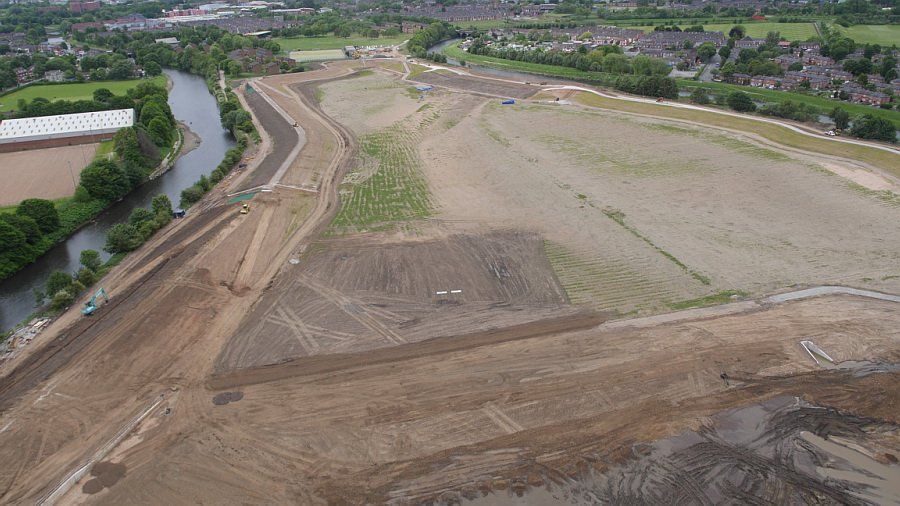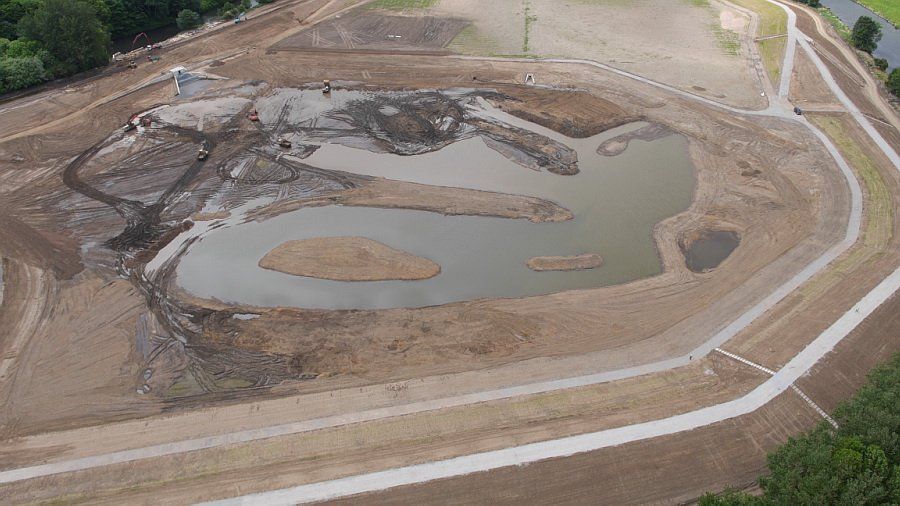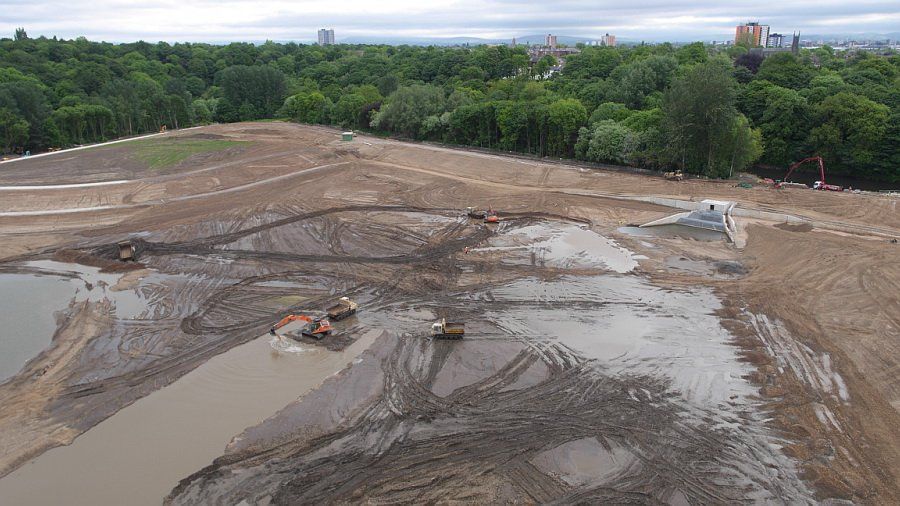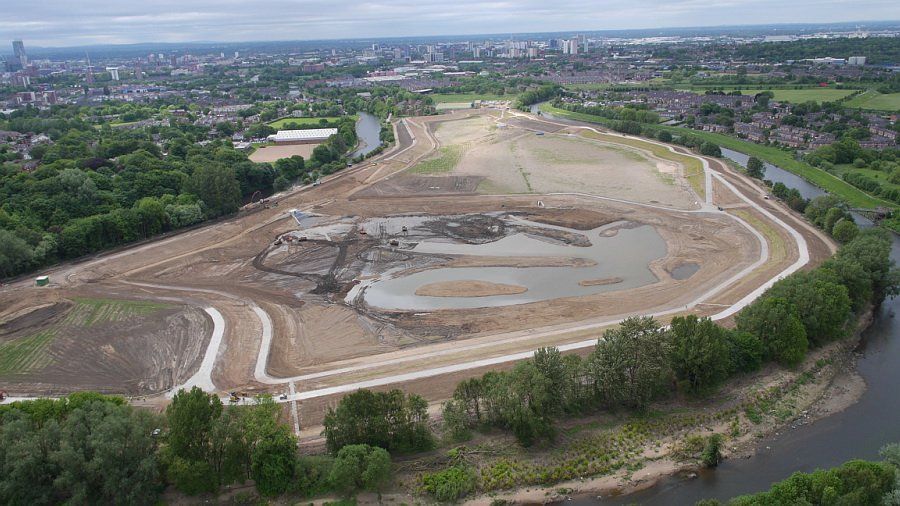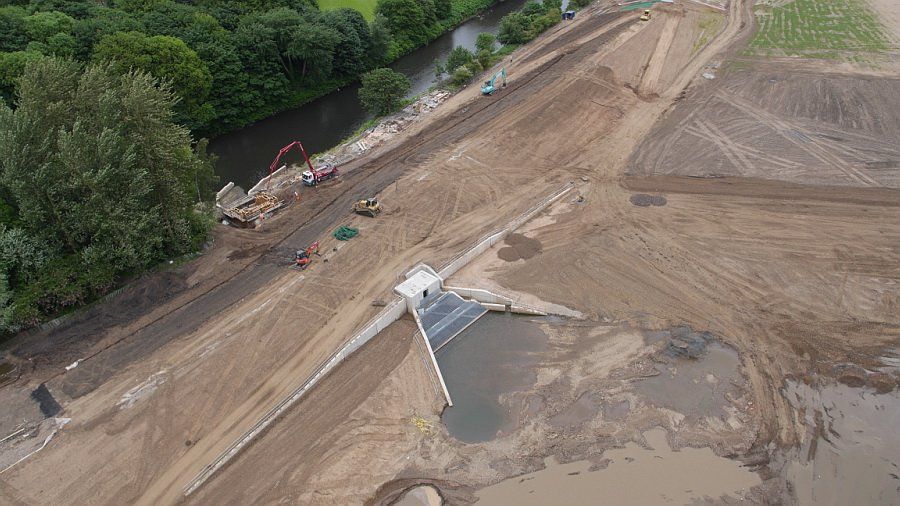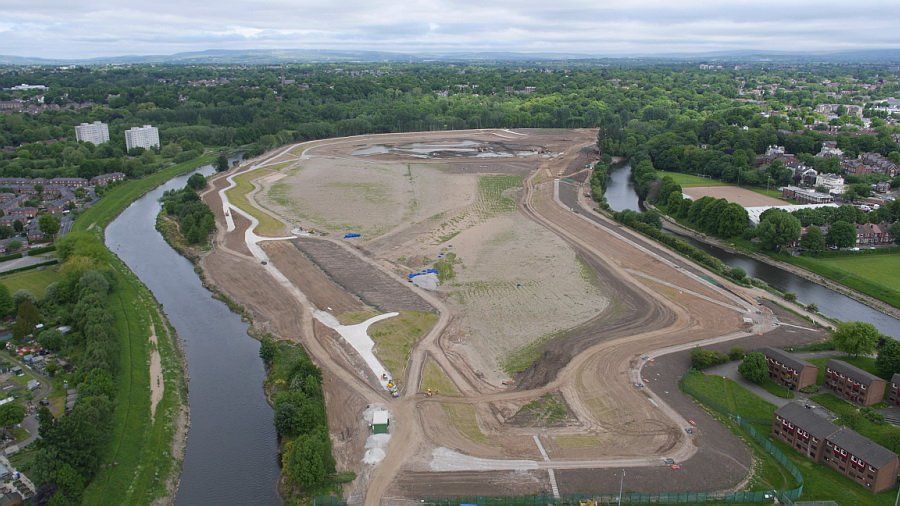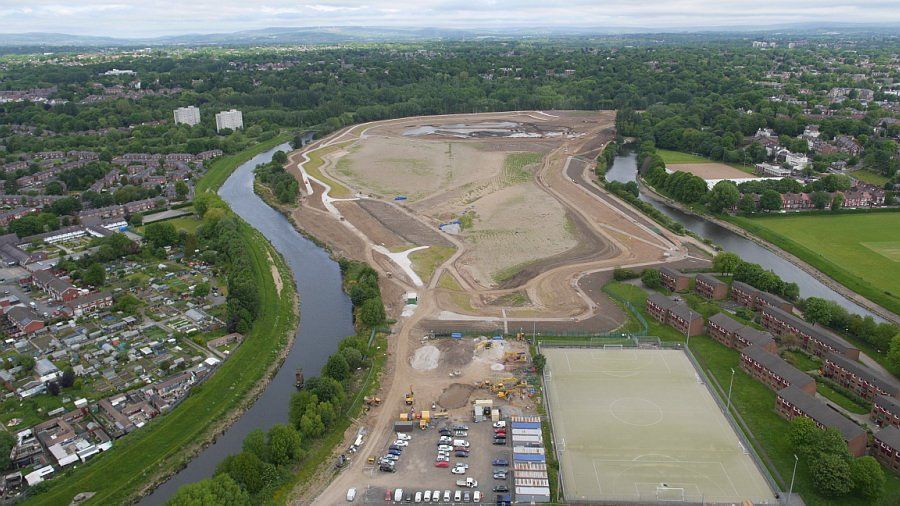Salford Flood Improvement
Location: Salford, Manchester
Value: £2.9m
Role: Alliance Partner
Salford Flood Improvement
Major Development Project:
The recently completed flood storage basin in Salford reduces the risk of flooding from the River Irwell, and provides a high quality urban wetland habitat. An Environment Agency £10 million flood scheme completed in February 2018, now protects almost 2,000 homes and businesses, provides the capacity of more than 250 Olympic-sized swimming pools of water during a flood, and includes more than 5 hectares of urban wetland habitat. The scheme also incorporates leisure and amenity benefits to the local community.
The flood defence created is an ‘offline’ storage basin that works alongside the existing flood storage area at Littleton Road, this being completed in 2005. To create the new storage capacity, earth was excavated from the site, which was reused to build a raised embankment around the site’s peripheral defence system. The embankment’s south-west corner features an inlet to allow the controlled spill of water into the basin when river levels are high. Water is released by two outlet pipes back into the river, once the water level has dropped.
As part of the flood scheme, D Morgan was responsible for removing the existing sports pitches to form the new flood basin and sports facilities based on the former Irwell Castle Estate. Our value engineered services included the:
- removal of 68,000m3 of topsoil from the perimeter of the site
- engineering of 260,000m3 cut and fill to construct the new basin/embankments
- construction of over 6km of new service and walking trails
- installation of over 2km of ducting
- the structural reinforcement of all the new embankments using geotextiles supplied and installed by D Morgan
Our Involvement as Alliance Partner:
Because the original scope of works required 40,000m3 of ground stabilisation, D Morgan’s site team value engineered the alluvium material by placing and aerating, thus allowing the moisture content to be reduced and therefore mitigating the use of lime/cement. This in turn reduced both costs and environmental impact. Additionally, because the end use of the area was for a temporary dam in flood conditions, the testing criteria were extensive, with material testing being undertaken at much greater intervals. The specification required a specialist Dam Engineer to correlate the results and to provide project sign off. Our value engineered works were undertaken to the highest standard, and we received zero non conformances for the whole project.

